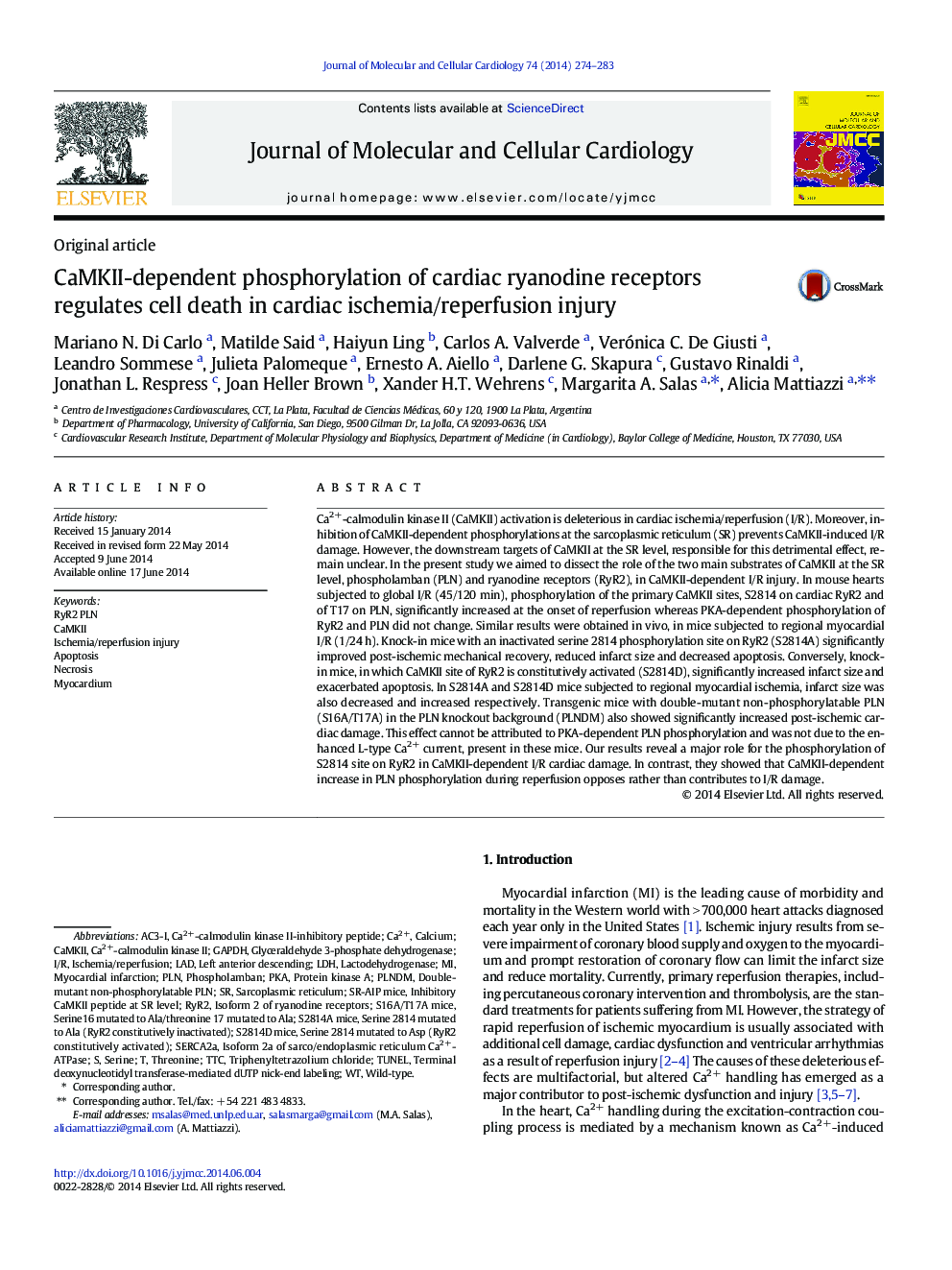| Article ID | Journal | Published Year | Pages | File Type |
|---|---|---|---|---|
| 8474764 | Journal of Molecular and Cellular Cardiology | 2014 | 10 Pages |
Abstract
Ca2+-calmodulin kinase II (CaMKII) activation is deleterious in cardiac ischemia/reperfusion (I/R). Moreover, inhibition of CaMKII-dependent phosphorylations at the sarcoplasmic reticulum (SR) prevents CaMKII-induced I/R damage. However, the downstream targets of CaMKII at the SR level, responsible for this detrimental effect, remain unclear. In the present study we aimed to dissect the role of the two main substrates of CaMKII at the SR level, phospholamban (PLN) and ryanodine receptors (RyR2), in CaMKII-dependent I/R injury. In mouse hearts subjected to global I/R (45/120Â min), phosphorylation of the primary CaMKII sites, S2814 on cardiac RyR2 and of T17 on PLN, significantly increased at the onset of reperfusion whereas PKA-dependent phosphorylation of RyR2 and PLN did not change. Similar results were obtained in vivo, in mice subjected to regional myocardial I/R (1/24Â h). Knock-in mice with an inactivated serine 2814 phosphorylation site on RyR2 (S2814A) significantly improved post-ischemic mechanical recovery, reduced infarct size and decreased apoptosis. Conversely, knock-in mice, in which CaMKII site of RyR2 is constitutively activated (S2814D), significantly increased infarct size and exacerbated apoptosis. In S2814A and S2814D mice subjected to regional myocardial ischemia, infarct size was also decreased and increased respectively. Transgenic mice with double-mutant non-phosphorylatable PLN (S16A/T17A) in the PLN knockout background (PLNDM) also showed significantly increased post-ischemic cardiac damage. This effect cannot be attributed to PKA-dependent PLN phosphorylation and was not due to the enhanced L-type Ca2+ current, present in these mice. Our results reveal a major role for the phosphorylation of S2814 site on RyR2 in CaMKII-dependent I/R cardiac damage. In contrast, they showed that CaMKII-dependent increase in PLN phosphorylation during reperfusion opposes rather than contributes to I/R damage.
Keywords
PLNRyR2pKaCaMKIIGAPDHTTCSERCA2aCa2+I/RIschemia/reperfusion injuryMyocardial infarctionischemia/reperfusionthreonineTriphenyltetrazolium chlorideTUNELApoptosisSarcoplasmic reticulumSerinephospholambanLADLDHterminal deoxynucleotidyl transferase-mediated dUTP nick-end labelingMyocardiumwild-typeNecrosisprotein kinase Aleft anterior descendingCalciumglyceraldehyde 3-phosphate dehydrogenase
Related Topics
Life Sciences
Biochemistry, Genetics and Molecular Biology
Cell Biology
Authors
Mariano N. Di Carlo, Matilde Said, Haiyun Ling, Carlos A. Valverde, Verónica C. De Giusti, Leandro Sommese, Julieta Palomeque, Ernesto A. Aiello, Darlene G. Skapura, Gustavo Rinaldi, Jonathan L. Respress, Joan Heller Brown, Xander H.T. Wehrens,
